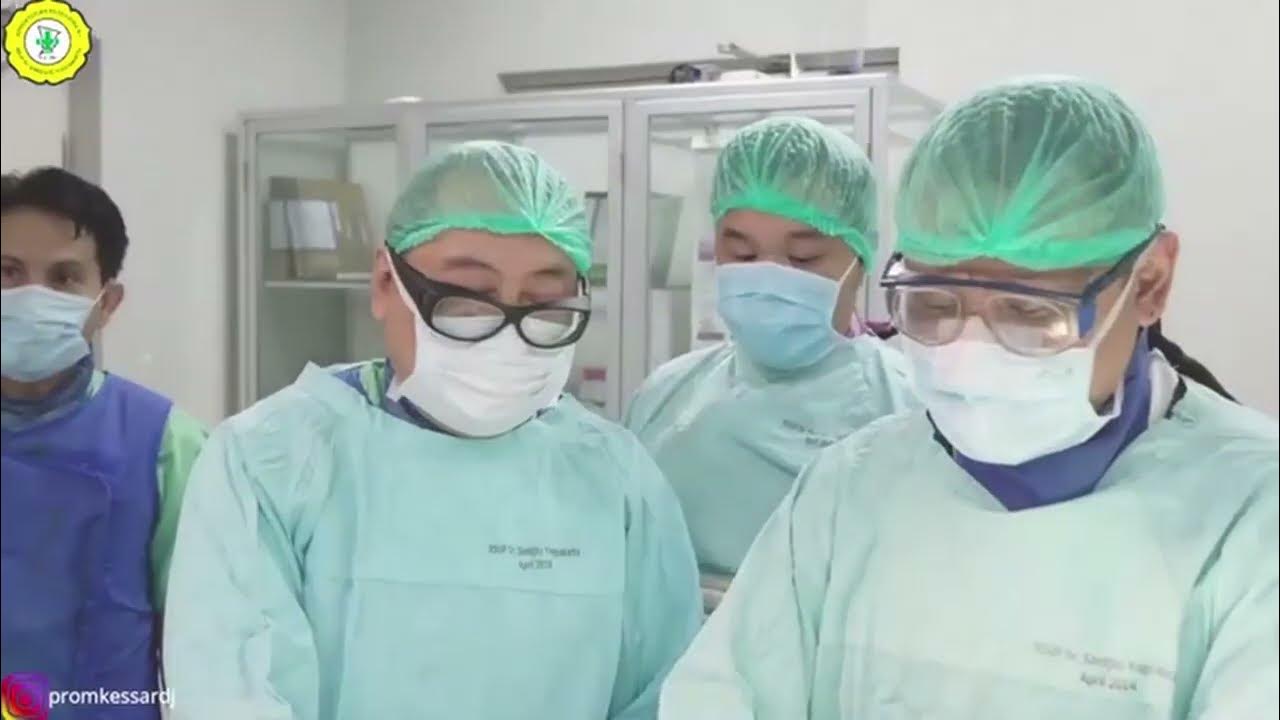Introduction to Radiology: Ultrasound
Summary
TLDRIn the third video of the 'Introduction to Radiology' series, Mahon Mathur presents a comprehensive overview of ultrasound imaging, focusing on distinguishing solid from cystic masses. The lecture highlights the historical context of ultrasound, its medical applications since the 1950s, and the technology behind sound wave generation. Mathur explains how sound waves interact with various tissues, resulting in different imaging characteristics. Cystic masses appear anechoic with clear borders, while solid masses show complex echoes. Emphasizing the absence of ionizing radiation, the lecture advocates for ultrasound's safety, particularly for young and pregnant patients.
Takeaways
- 📜 Ultrasound imaging has been utilized for centuries, with its historical use dating back to 1794 when Italian scientists studied bats' echolocation.
- 🩺 Medical ultrasound began in the mid-1950s, particularly for obstetric applications, due to its safety—unlike CT scans, it does not use ionizing radiation.
- 🔊 Ultrasound works by emitting sound waves through a transducer, which contains piezoelectric crystals that convert electrical impulses into sound waves.
- 📏 Different transducers are used based on the depth of the tissue being examined, with some designed for superficial tissues and others for deeper structures.
- 🌊 Sound waves interact differently with various tissues: they can be transmitted, reflected, or partially reflected, influencing the appearance of images.
- ⚫ Cystic masses appear anechoic (black) on ultrasound due to sound waves passing through fluid without reflection, while solid masses reflect sound waves, appearing brighter.
- 📊 The orientation of ultrasound images can be axial or sagittal, with a designated probe marker indicating the position of the transducer.
- 📏 Key characteristics of cystic masses include smooth walls, a circumscribed appearance, and brighter posterior tissues due to posterior acoustic enhancement.
- 🏥 Solid masses show a complex appearance with varying levels of echogenicity, influenced by the mixture of sound wave transmission and reflection.
- 🦴 Bone and air interfaces produce bright signals on ultrasound, as sound waves are reflected completely, demonstrating the contrast between different tissue types.
Q & A
What is the main objective of the video on ultrasound imaging?
-The main objective is to teach viewers how to distinguish between solid and cystic masses on ultrasound images.
How did the concept of ultrasound imaging originate?
-Ultrasound imaging originated from the natural ability of bats to navigate using sound waves, which was discovered by Italian scientists in 1794.
When did ultrasound begin to be used in medical applications?
-Ultrasound began to be used in medical applications in the mid-1950s, particularly in obstetrics.
Why is ultrasound preferred over CT imaging and conventional radiography in certain cases?
-Ultrasound is preferred because it uses sound waves instead of ionizing radiation, reducing the risk of damage to patients' DNA, making it safer for young and pregnant patients.
What role do piezoelectric crystals play in ultrasound imaging?
-Piezoelectric crystals in the transducer convert electrical impulses into sound waves, enabling the generation of ultrasound images.
What are the three primary actions sound waves can take when interacting with tissues?
-Sound waves can be completely transmitted through tissues, completely reflected, or produce varying echoes based on tissue density, resulting in different shades of gray on the ultrasound image.
What characteristics define a cystic mass in ultrasound imaging?
-A cystic mass appears anechoic (black) on the image, has extremely smooth walls, is circumscribed, and shows posterior acoustic enhancement.
How can solid masses be identified on an ultrasound?
-Solid masses can be identified by their bright appearance (hyper-echoic), complex internal echoes, and increased sound wave reflection, indicating denser tissue.
What is posterior acoustic enhancement?
-Posterior acoustic enhancement occurs when sound waves pass through a fluid-filled structure, resulting in a brighter appearance of the tissues immediately behind the cyst compared to surrounding tissues.
What safety advantages does ultrasound offer compared to other imaging modalities?
-Ultrasound does not involve ionizing radiation, making it safer for use in sensitive populations like children and pregnant women, reducing the risk of radiation exposure.
Outlines

This section is available to paid users only. Please upgrade to access this part.
Upgrade NowMindmap

This section is available to paid users only. Please upgrade to access this part.
Upgrade NowKeywords

This section is available to paid users only. Please upgrade to access this part.
Upgrade NowHighlights

This section is available to paid users only. Please upgrade to access this part.
Upgrade NowTranscripts

This section is available to paid users only. Please upgrade to access this part.
Upgrade NowBrowse More Related Video

Video BCCT Radiologi Dasar (2020)

Introduction To Radiology | What is Radiology | Imaging Modalities | Basics of Radiology

PRODUÇÃO DE RAIOS X - PARTE 1 - POR ACADEMIA DE RADIOLOGIA

Introduction to Radiology: Conventional Radiography

Ultrasound of Intussusception

Avaliação Semiológica e Diagnóstico em Pequenos Animais - Aula 14.1 e 14.2
5.0 / 5 (0 votes)